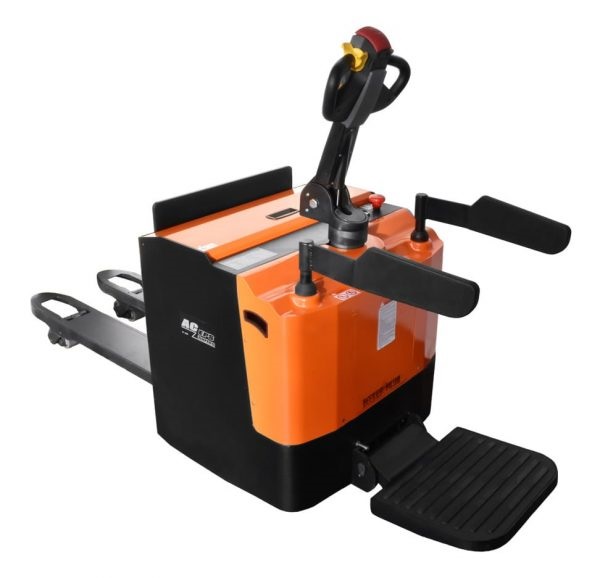powered pallet truck operator's course

![]()
![]()
Reach pallet truck questions, open and multiple choice
*These questions, (Both open and multiple choice), can be added in for A7 type trucks which are pedestrian, electric reach trucks.
Reach truck multiple choice questions
1. When traveling on slopes with a pedestrian operated reach truck where should
the load be carried on the forks?
A. With the load facing uphill and tilted forwards
B. With the load facing downhill and tilted forward
C. With the load facing uphill and tilted back
D. With the load facing uphill with reach carriage extended to increase stability
2. What is the meaning of “free lift” in connection with lift trucks?
A. The distance the forks can be raised before the mast begins to extend
B. The tolerance allowed for fork clearance whilst entering the pallet
C. Passengers may be carried on the truck to assist the operator
D. Because the hydraulics do not use power when being lowered
3. When tilting a load forward at height, why is there an increased risk of the truck tipping
A. The lateral force over the rear axle will increase
B. The longitudinal stability will be reduced
C. The combined centre of gravity is reduced
D. The load is much heavier as it is tilted forward
Reach truck open questions
1. State the recommended operational procedure for stacking a laden pallet in an
industrial racking system with a pedestrian operated reach truck
A. Approach the racking location and stop with the load 100mm-150mm from the
racking system
B. Reduce the tilt ensuring that the pallet is stable
C. Raise the pallet to the required location height
D. Drive in with the truck and stop with the reach legs within 50mm of the racking system
E. Extend the reach mechanism so the pallet is equally spaced on the beams
F. Ensure that the pallet is level
G. Lower the pallet onto the beam
H. Retract the reach
I. Reverse in a straight line away from the racking system so the fork tips are clear
J. Lower the forks into the travel position
3. Name four reasons why a truck could tip forwards/backwards (longitudinal
stability)
A. Harsh braking
B. Harsh acceleration
C. Live load
D. Overloading
E. Ground conditions
F. Tilting a load forward at height